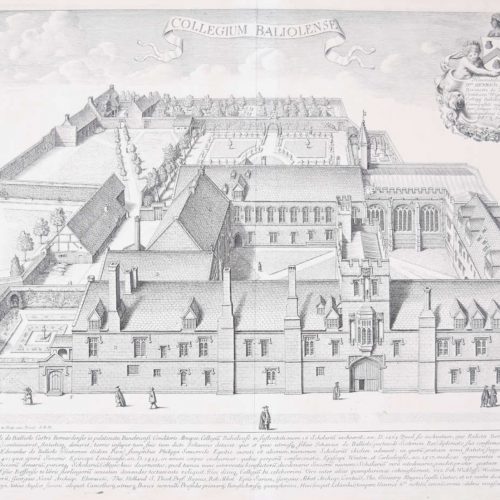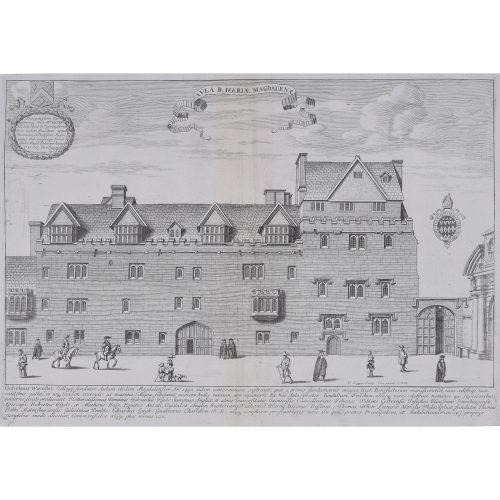-
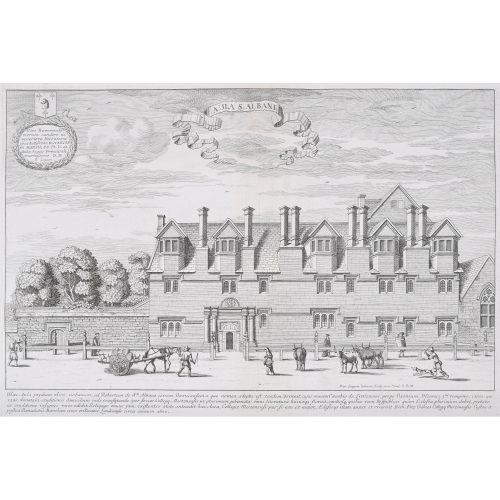
David Loggan (1634-1692)
St Alban's Hall, Oxford
Engraving, 1675 25x35cm Now a part of Merton College For biographical details and other works by the artist click here. If you are interested email info@manningfineart.co.uk or call us on 07929 749056. -
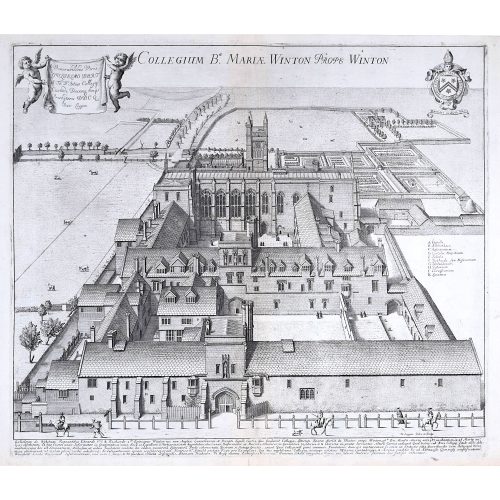
David Loggan (1634-1692) Winchester College
Engraving 1675 40x46cm Baptised in Danzig in 1634 Loggan's parents were English and Scottish. Studying engraving in Danzig with Willem Hondius (1598-1652 or 1658) he moved to London in the late 1650s producing the engraved title-page for the folio 1662 Book of Common Prayer. Marrying in 1663 he moved to Nuffield, Oxfordshire in 1665 to avoid the Plague and was in 1668/9 appointed Public Sculptor to the nearby University of Oxford having been commissioned to produce bird’s-eye views of all the Oxford Colleges. He lived in Holywell Street as he did this. Oxonia illustrata was published in 1675, with the help of Robert White (1645-1704). Following its completion he commenced work on his equivalent work for Cambridge, Cantabrigia Illustrata which was finally published in 1690 when he was made engraver to Cambridge University. Oxonia illustrata also includes an engraving of Winchester College (sharing its founder – William of Wykeham – with New College) whilst Cantabrigia illustrata includes one of Eton College (which shares its founder – Henry VIII – with King’s College). Bird’s-eye views required a particular talent as an architectural perspectivist of that era as it was not until 1783 that the first living thing (a sheep, named Montauciel ‘climb to the sky’) was sent aloft by the Mongolfier brothers in a balloon. Loggan thus had to rely on his imagination in conceiving the views. Loggan’s views constitute the first accurate depictions of the two Universities, in many ways unchanged today. Whilst the Oxford engravings were produced in reasonable numbers and ran to a second edition (on thicker paper and with a plate number in the bottom right-hand corner), those of Cambridge were printed in smaller numbers and no second edition was produced. The Dutchman Pieter van der Aa published some miniature versions of the engravings for James Beverell’s guidebook to the UK Les Delices de la Grande Bretagne c. 1708. Edmund Hort New (1871-1931) produced a series of pen-and-ink drawings of views of Oxford that paid homage to Loggan showing the development of the city in the following two hundred years. They were turned into photoengravings by Emery Walker who published the series. Probably no more than two hundred of each engraving were produced and the plates were destroyed in the blitz. The contemporary artist Andrew Ingamells (b.1956) has produced a highly-acclaimed series of etchings again bringing Loggan’s vision up to date. If you are interested email info@manningfineart.co.uk or call us on 07929 749056. Condition: Centre fold, as issued. Some age toning as visible in photograph; usual handling wear and marks to edges. Generally very good. -
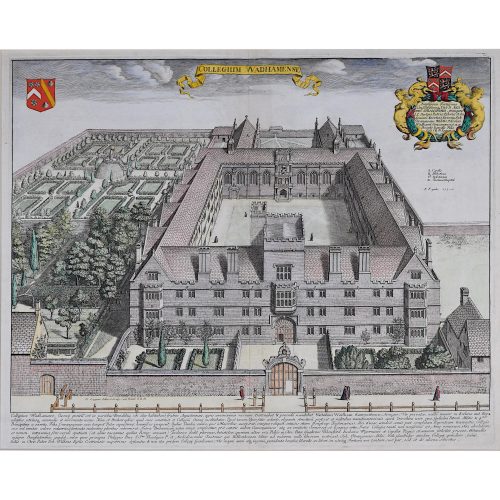
David Loggan (1634-1692)
Wadham College Oxford
Engraving (1675) with later hand colouring. 34x42cm If you are interested email info@manningfineart.co.uk or call us on 07929 749056. -
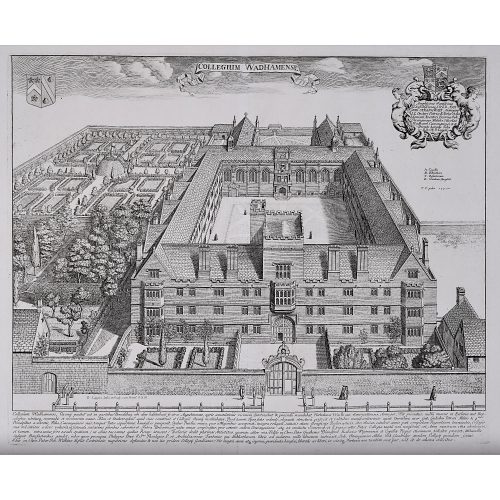
David Loggan (1634-1692)
Wadham College Oxford
Engraving (1675) 34x42cm If you are interested email info@manningfineart.co.uk or call us on 07929 749056. -
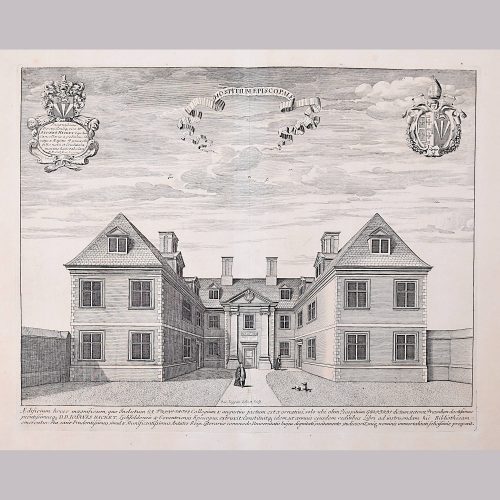
David Loggan (1634-1692) The Bishop's Hostal, Trinity College Cambridge
Engraving 1690 35x50cm Loggan was born to English and Scottish parents, and was baptised in Danzig in 1634. After studying engraving in Danzig with Willem Hondius (1598-1652 or 1658), he moved to London in the late 1650s, going on to produce the engraved title-page for the folio 1662 Book of Common Prayer. He married in 1663 and moved to Nuffield in Oxfordshire in 1665. Loggan was appointed Public Sculptor to the nearby University of Oxford in the late 1660s, having been commissioned to produce bird’s-eye views of all the Oxford colleges. He lived in Holywell Street as he did this. The 'Oxonia Illustrata' was published in 1675, with the help of Robert White (1645-1704). Following its completion, Loggan began work on his equivalent work for Cambridge; the 'Cantabrigia Illustrata' was finally published in 1690, when he was made engraver to Cambridge University. The 'Oxonia Illustrata' also includes an engraving of Winchester College (Winchester and New College share William of Wykeham as their founder) whilst the 'Cantabrigia Illustrata' includes one of Eton College (which shares its founder, Henry VIII, with King’s College). Bird’s-eye views from this era required a particular talent as an architectural perspectivist; it was not until 1783 that it became possible for artists to ascend via hot air balloons and view the scenes they were depicting from above. Loggan thus had to rely on his imagination in conceiving the views. Loggan’s views constitute the first accurate depictions of the two Universities, in many ways unchanged today. Whilst the Oxford engravings were produced in reasonable numbers and ran to a second edition by Henry Overton (on thicker paper and with a plate number in Roman numerals in the bottom right-hand corner), those of Cambridge were printed in much smaller numbers. The Dutchman Pieter van der Aa published some miniature versions of the engravings for James Beverell’s guidebook to the UK, 'Les Delices de la Grande Bretagne' (c. 1708). The contemporary artist Andrew Ingamells (b.1956) has produced a highly-acclaimed series of etchings which bring Loggan’s original vision up to date. If you are interested email info@manningfineart.co.uk or call us on 07929 749056. Condition: Some age toning as visible in photograph; usual handling wear and marks to edges, generally very good. -
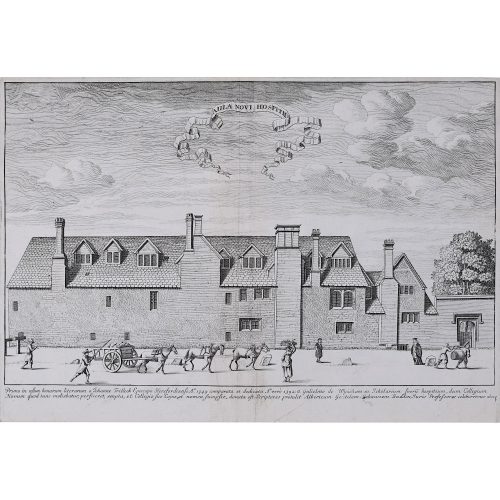
David Loggan (1634-1692)
Aula Novi Hospitii
Engraving, 1675 25x36cm If you are interested email info@manningfineart.co.uk or call us on 07929 749056. -
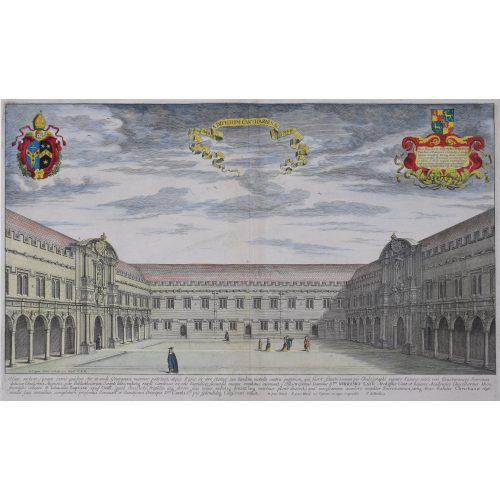
David Loggan (1634-1692)
St John's College Oxford, Canterbury Quad
Engraving (1675) with later hand colouring 31x50cm If you are interested email info@manningfineart.co.uk or call us on 07929 749056. -
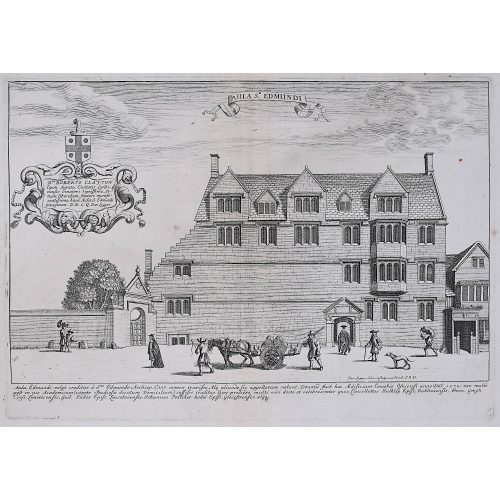
David Loggan (1634-1692)
St Edmund Hall Oxford
Engraving (1675) 25x35cm If you are interested email info@manningfineart.co.uk or call us on 07929 749056. -
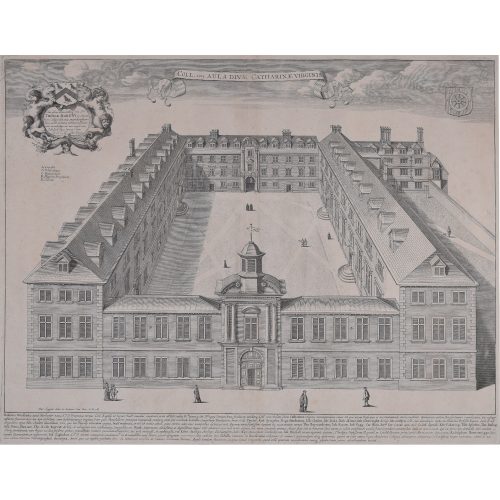
David Loggan (1634-1692)
St Catharine's College, Cambridge
Engraving Published 1690 35x51cm For biographical details and other works by the artist please click here. If you are interested email info@manningfineart.co.uk or call us on 07929 749056. -
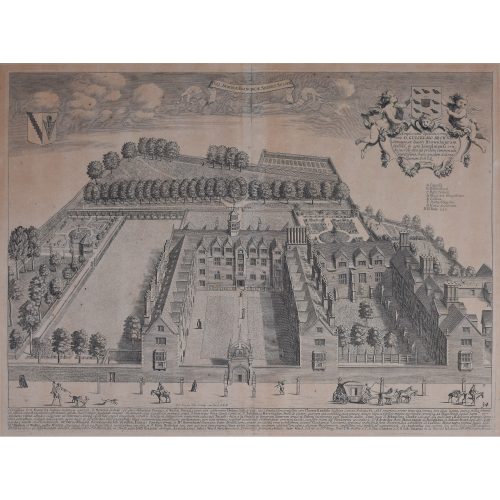
David Loggan (1634-1692)
Sidney Sussex College, Cambridge
Engraving Published 1690 34x45cm For biographical details and other works by the artist please click here. If you are interested email info@manningfineart.co.uk or call us on 07929 749056. -
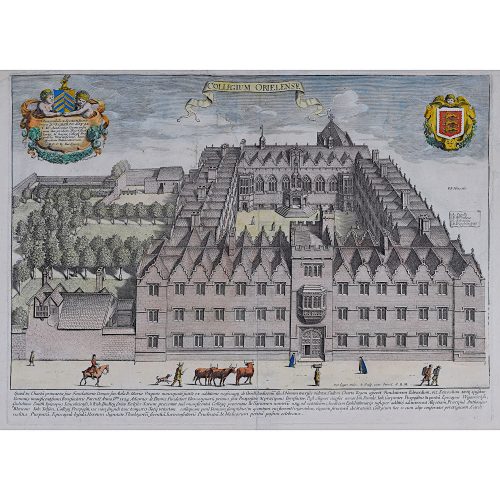
David Loggan (1634-1692)
Oriel College Oxford
Engraving (1675) 34x42cm If you are interested email info@manningfineart.co.uk or call us on 07929 749056. -
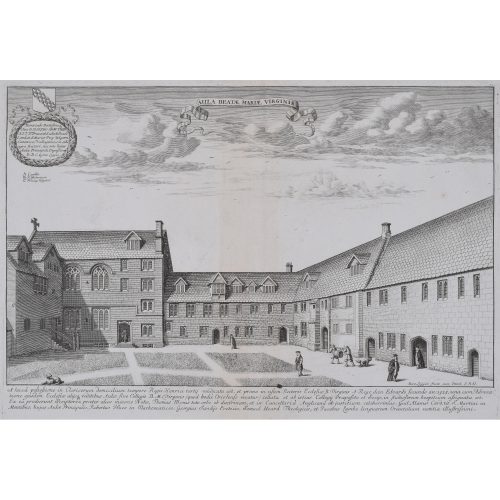
David Loggan (1634-1692)
Hall of the Blessed Virgin Oxford Engraving 25x35cm If you are interested email info@manningfineart.co.uk or call us on 07929 749056. -
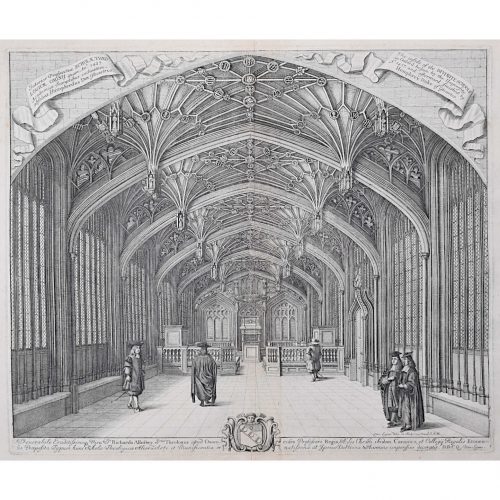
David Loggan (1634-1692)
Scholae Theologicae Oxford
Engraving (1675) 34x41cm To view biographical details and other prints by Loggan click here. Condition: Generally good condition, short edge tears and staining to margins outside platemark. If you are interested email info@manningfineart.co.uk or call us on 07929 749056. -
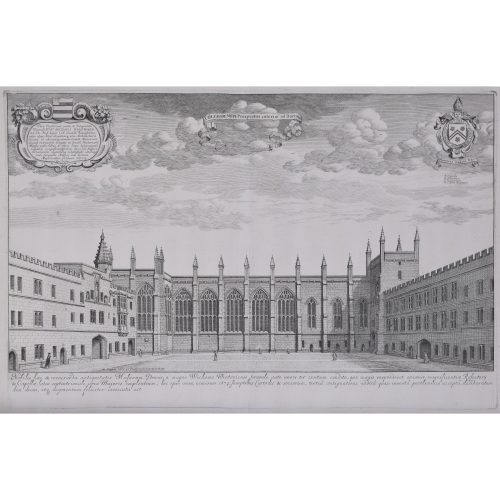
David Loggan (1634-1692) New College, Oxford
Collegium Novum Engraving (1690) mounted to board 32x49cm To see biographical details and other works by the artist please click here. If you are interested email info@manningfineart.co.uk or call us on 07929 749056. Condition: Good. -
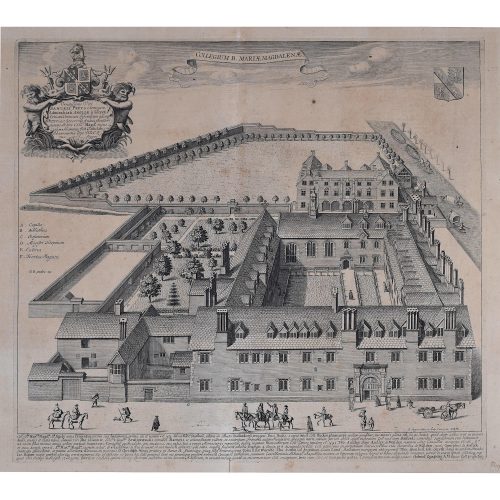
David Loggan (1634-1692)
Magdalene College, Cambridge
Engraving Published 1690 39x42cm For biographical details and other works by the artist please click here. If you are interested email info@manningfineart.co.uk or call us on 07929 749056. -
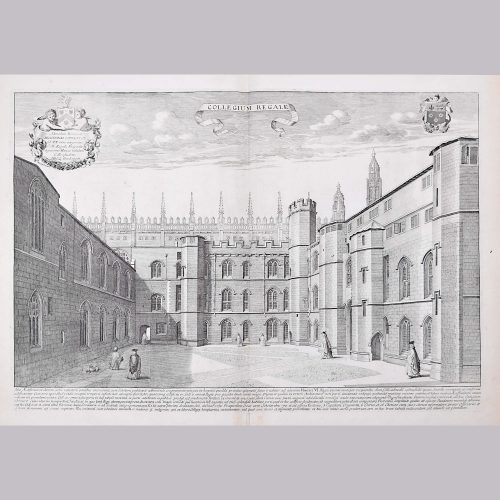
David Loggan (1634-1692) King's College Cambridge
Engraving 1690 40x51cm Baptised in Danzig in 1634 Loggan's parents were English and Scottish. Studying engraving in Danzig with Willem Hondius (1598-1652 or 1658) he moved to London in the late 1650s producing the engraved title-page for the folio 1662 Book of Common Prayer. Marrying in 1663 he moved to Nuffield, Oxfordshire in 1665 to avoid the Plague and was in 1668/9 appointed Public Sculptor to the nearby University of Oxford having been commissioned to produce bird’s-eye views of all the Oxford Colleges. He lived in Holywell Street as he did this. Oxonia illustrata was published in 1675, with the help of Robert White (1645-1704). Following its completion he commenced work on his equivalent work for Cambridge, Cantabrigia Illustrata which was finally published in 1690 when he was made engraver to Cambridge University. Oxonia illustrata also includes an engraving of Winchester College (sharing its founder – William of Wykeham – with New College) whilst Cantabrigia illustrata includes one of Eton College (which shares its founder – Henry VIII – with King’s College). Bird’s-eye views required a particular talent as an architectural perspectivist of that era as it was not until 1783 that the first living thing (a sheep, named Montauciel ‘climb to the sky’) was sent aloft by the Mongolfier brothers in a balloon. Loggan thus had to rely on his imagination in conceiving the views. Loggan’s views constitute the first accurate depictions of the two Universities, in many ways unchanged today. Whilst the Oxford engravings were produced in reasonable numbers and ran to a second edition by Henry Overton (on thicker paper and with a plate number in the bottom right-hand corner), those of Cambridge were printed in smaller numbers and it is thought largely no second edition was produced. The Dutchman Pieter van der Aa published some miniature versions of the engravings for James Beverell’s guidebook to the UK Les Delices de la Grande Bretagne c. 1708. Edmund Hort New (1871-1931) produced a series of pen-and-ink drawings of views of Oxford that paid homage to Loggan showing the development of the city in the following two hundred years. They were turned into photoengravings by Emery Walker who published the series between . Probably no more than two hundred of each engraving were produced and the plates were destroyed in the blitz. The contemporary artist Andrew Ingamells (b.1956) has produced a highly-acclaimed series of etchings again bringing Loggan’s vision up to date. If you are interested email info@manningfineart.co.uk or call us on 07929 749056. Condition: Some age toning as visible in photograph; usual handling wear and marks to edges, generally very good. -
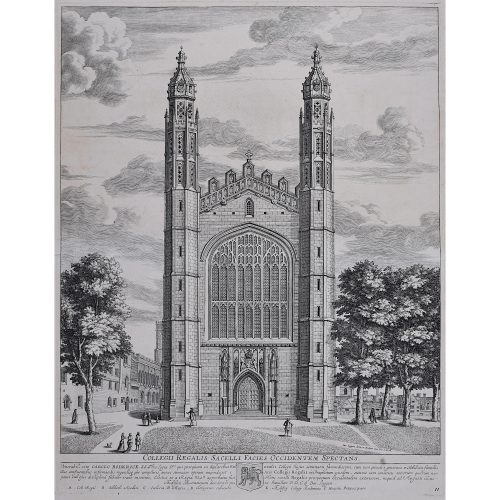
David Loggan (1634-1692)
King's College, Cambridge Chapel West Front
Engraving Published 1690 45x35cm For biographical details and other works by the artist please click here. If you are interested email info@manningfineart.co.uk or call us on 07929 749056. -
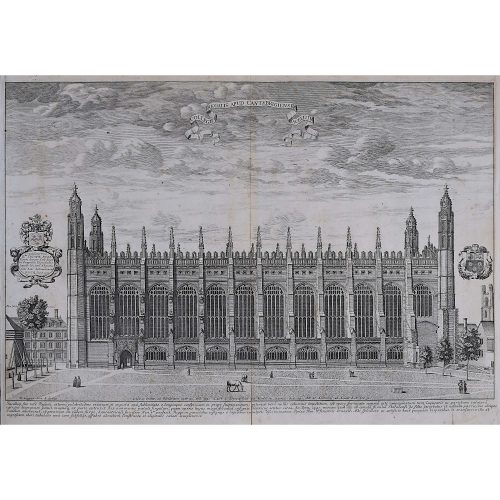
David Loggan (1634-1692)
King's College, Cambridge Chapel South Front
Engraving Published 1690 40x55cm For biographical details and other works by the artist please click here. If you are interested email info@manningfineart.co.uk or call us on 07929 749056. -
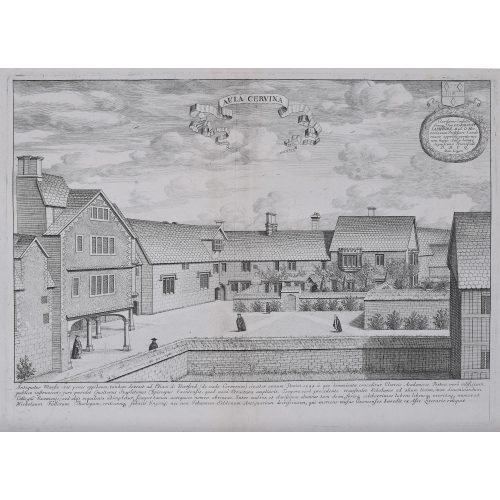
David Loggan (1634-1692)
Hart Hall Oxford, now Hertford College (Aula Cervinia)
Engraving (1675) 28x39cm If you are interested email info@manningfineart.co.uk or call us on 07929 749056. -
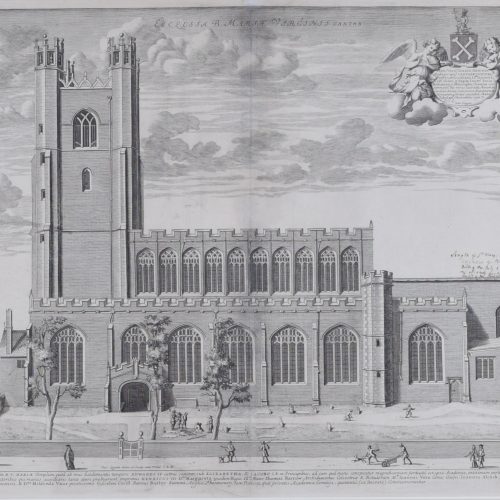
David Loggan (1634-1692) Great St Mary's Church, Cambridge University Church (1690)
Engraving 35 x 50 cm Loggan was born to English and Scottish parents, and was baptised in Danzig in 1634. After studying engraving in Danzig with Willem Hondius (1598-1652 or 1658), he moved to London in the late 1650s, going on to produce the engraved title-page for the folio 1662 Book of Common Prayer. He married in 1663 and moved to Nuffield in Oxfordshire in 1665. Loggan was appointed Public Sculptor to the nearby University of Oxford in the late 1660s, having been commissioned to produce bird’s-eye views of all the Oxford colleges. He lived in Holywell Street as he did this. The 'Oxonia Illustrata' was published in 1675, with the help of Robert White (1645-1704). Following its completion, Loggan began work on his equivalent work for Cambridge; the 'Cantabrigia Illustrata' was finally published in 1690, when he was made engraver to Cambridge University. The 'Oxonia Illustrata' also includes an engraving of Winchester College (Winchester and New College share William of Wykeham as their founder) whilst the 'Cantabrigia Illustrata' includes one of Eton College (which shares its founder, Henry VIII, with King’s College). Bird’s-eye views from this era required a particular talent as an architectural perspectivist; it was not until 1783 that it became possible for artists to ascend via hot air balloons and view the scenes they were depicting from above. Loggan thus had to rely on his imagination in conceiving the views. Loggan’s views constitute the first accurate depictions of the two Universities, in many ways unchanged today. Whilst the Oxford engravings were produced in reasonable numbers and ran to a second edition by Henry Overton (on thicker paper and with a plate number in Roman numerals in the bottom right-hand corner), those of Cambridge were printed in much smaller numbers. The Dutchman Pieter van der Aa published some miniature versions of the engravings for James Beverell’s guidebook to the UK, 'Les Delices de la Grande Bretagne' (c. 1708). The contemporary artist Andrew Ingamells (b.1956) has produced a highly-acclaimed series of etchings which bring Loggan’s original vision up to date. If you’d like to know more, please email info@manningfineart.co.uk or call us on 07929 749056. Condition: has been cleaned; scholarly observations in ink; crease in paper lower left before printing. Usual handling wear and marks to edges. -
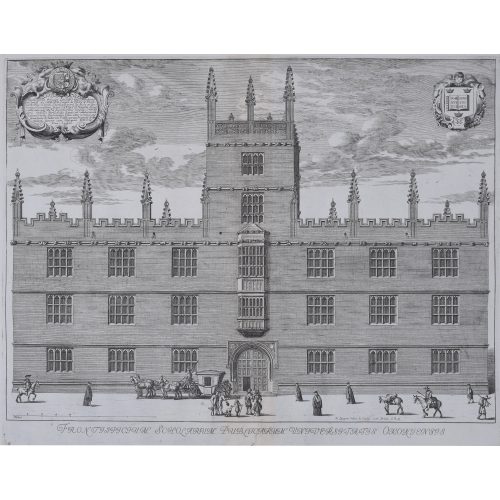
David Loggan (1634-1692)
Frontispiece Public Schools Oxford
Engraving 33x42cm If you are interested email info@manningfineart.co.uk or call us on 07929 749056. -
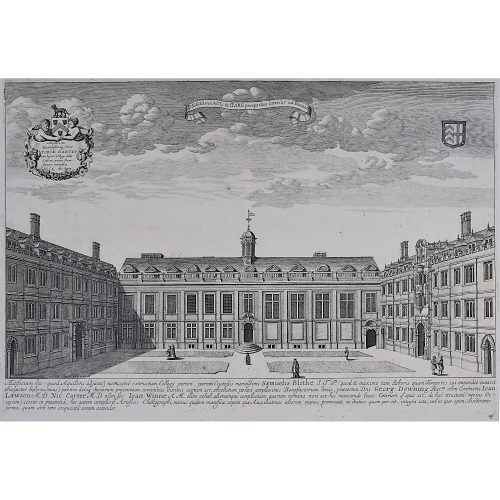
David Loggan (1634-1692)
Clare College, Cambridge
Engraving Originally published 1690, this is a slightly later edition, by Henry Overton, shortly after 1700. 35x51cm For biographical details and other works by the artist please click here. If you are interested email info@manningfineart.co.uk or call us on 07929 749056. -
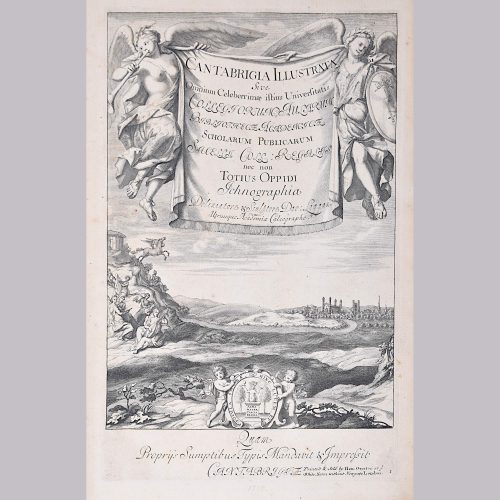
David Loggan (1634-1692) View of Cambridge
Engraving after 1690, this is a slightly later Henry Overton printing, shortly after 1700 35x51cm Baptised in Danzig in 1634 Loggan's parents were English and Scottish. Studying engraving in Danzig with Willem Hondius (1598-1652 or 1658) he moved to London in the late 1650s producing the engraved title-page for the folio 1662 Book of Common Prayer. Marrying in 1663 he moved to Nuffield, Oxfordshire in 1665 to avoid the Plague and was in 1668/9 appointed Public Sculptor to the nearby University of Oxford having been commissioned to produce bird’s-eye views of all the Oxford Colleges. He lived in Holywell Street as he did this. Oxonia illustrata was published in 1675, with the help of Robert White (1645-1704). Following its completion he commenced work on his equivalent work for Cambridge, Cantabrigia Illustrata which was finally published in 1690 when he was made engraver to Cambridge University. Oxonia illustrata also includes an engraving of Winchester College (sharing its founder – William of Wykeham – with New College) whilst Cantabrigia illustrata includes one of Eton College (which shares its founder – Henry VIII – with King’s College). Bird’s-eye views required a particular talent as an architectural perspectivist of that era as it was not until 1783 that the first living thing (a sheep, named Montauciel ‘climb to the sky’) was sent aloft by the Mongolfier brothers in a balloon. Loggan thus had to rely on his imagination in conceiving the views. Loggan’s views constitute the first accurate depictions of the two Universities, in many ways unchanged today. Whilst the Oxford engravings were produced in reasonable numbers and ran to a second edition by Henry Overton (on thicker paper and with a plate number in the bottom right-hand corner), those of Cambridge were printed in smaller numbers and it is thought largely no second edition was produced, although this frontispiece proudly claims to have been published by Overton and a pencil note on the print suggests 1715 as a date. The Dutchman Pieter van der Aa published some miniature versions of the engravings for James Beverell’s guidebook to the UK Les Delices de la Grande Bretagne c. 1708. Edmund Hort New (1871-1931) produced a series of pen-and-ink drawings of views of Oxford that paid homage to Loggan showing the development of the city in the following two hundred years. They were turned into photoengravings by Emery Walker who published the series between . Probably no more than two hundred of each engraving were produced and the plates were destroyed in the blitz. The contemporary artist Andrew Ingamells (b.1956) has produced a highly-acclaimed series of etchings again bringing Loggan’s vision up to date. If you are interested email info@manningfineart.co.uk or call us on 07929 749056. Condition: Good. Some age toning as visible in photograph; usual handling wear and marks to edges. -
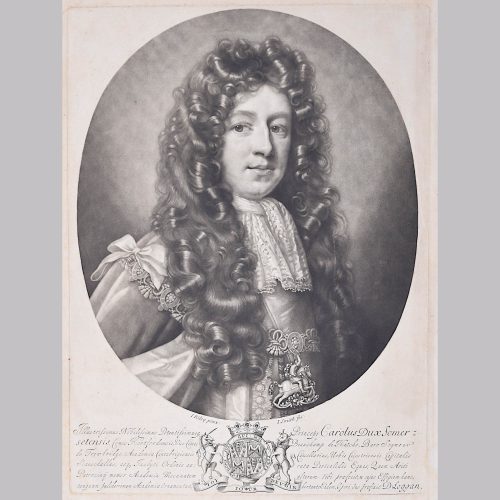
David Loggan (1634-1692) Charles Duke of Somerset
Mezzotint 1690 35x25cm Chancellor of Cambridge University, the Duke of Somerset's portrait was in Loggan's Cantabrigia Illustrata. Baptised in Danzig in 1634 Loggan's parents were English and Scottish. Studying engraving in Danzig with Willem Hondius (1598-1652 or 1658) he moved to London in the late 1650s producing the engraved title-page for the folio 1662 Book of Common Prayer. Marrying in 1663 he moved to Nuffield, Oxfordshire in 1665 to avoid the Plague and was in 1668/9 appointed Public Sculptor to the nearby University of Oxford having been commissioned to produce bird’s-eye views of all the Oxford Colleges. He lived in Holywell Street as he did this. Oxonia illustrata was published in 1675, with the help of Robert White (1645-1704). Following its completion he commenced work on his equivalent work for Cambridge, Cantabrigia Illustrata which was finally published in 1690 when he was made engraver to Cambridge University. Oxonia illustrata also includes an engraving of Winchester College (sharing its founder – William of Wykeham – with New College) whilst Cantabrigia illustrata includes one of Eton College (which shares its founder – Henry VIII – with King’s College). Bird’s-eye views required a particular talent as an architectural perspectivist of that era as it was not until 1783 that the first living thing (a sheep, named Montauciel ‘climb to the sky’) was sent aloft by the Mongolfier brothers in a balloon. Loggan thus had to rely on his imagination in conceiving the views. Loggan’s views constitute the first accurate depictions of the two Universities, in many ways unchanged today. Whilst the Oxford engravings were produced in reasonable numbers and ran to a second edition by Henry Overton (on thicker paper and with a plate number in the bottom right-hand corner), those of Cambridge were printed in smaller numbers and it is thought largely no second edition was produced, although this frontispiece proudly claims to have been published by Overton and a pencil note on the print suggests 1715 as a date. The Dutchman Pieter van der Aa published some miniature versions of the engravings for James Beverell’s guidebook to the UK Les Delices de la Grande Bretagne c. 1708. Edmund Hort New (1871-1931) produced a series of pen-and-ink drawings of views of Oxford that paid homage to Loggan showing the development of the city in the following two hundred years. They were turned into photoengravings by Emery Walker who published the series between . Probably no more than two hundred of each engraving were produced and the plates were destroyed in the blitz. The contemporary artist Andrew Ingamells (b.1956) has produced a highly-acclaimed series of etchings again bringing Loggan’s vision up to date. If you are interested email info@manningfineart.co.uk or call us on 07929 749056. Condition: Good. -
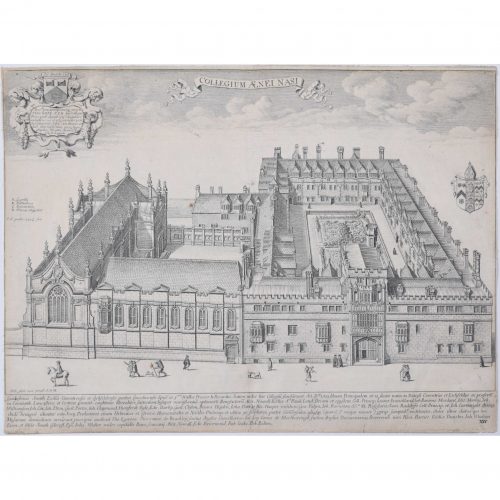
David Loggan (1634-1692)
Brasenose College Oxford
Engraving (1675) 30x40cm To view biographical details and other prints by Loggan click here. Trimmed to within platemark and backed to linen (very many years ago). Otherwise generally good condition. If you are interested email info@manningfineart.co.uk or call us on 07929 749056. -
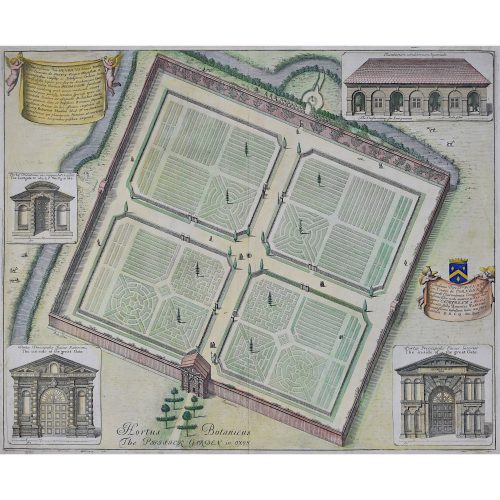
David Loggan (1634-1692) Botanic Gardens Oxford
Engraving (1675) with later hand colouring 30x40cm Loggan was born to English and Scottish parents, and was baptised in Danzig in 1634. After studying engraving in Danzig with Willem Hondius (1598-1652 or 1658), he moved to London in the late 1650s, going on to produce the engraved title-page for the folio 1662 Book of Common Prayer. He married in 1663 and moved to Nuffield in Oxfordshire in 1665. Loggan was appointed Public Sculptor to the nearby University of Oxford in the late 1660s, having been commissioned to produce bird’s-eye views of all the Oxford colleges. He lived in Holywell Street as he did this. The 'Oxonia Illustrata' was published in 1675, with the help of Robert White (1645-1704). Following its completion, Loggan began work on his equivalent work for Cambridge; the 'Cantabrigia Illustrata' was finally published in 1690, when he was made engraver to Cambridge University. The 'Oxonia Illustrata' also includes an engraving of Winchester College (Winchester and New College share William of Wykeham as their founder) whilst the 'Cantabrigia Illustrata' includes one of Eton College (which shares its founder, Henry VIII, with King’s College). Bird’s-eye views from this era required a particular talent as an architectural perspectivist; it was not until 1783 that it became possible for artists to ascend via hot air balloons and view the scenes they were depicting from above. Loggan thus had to rely on his imagination in conceiving the views. Loggan’s views constitute the first accurate depictions of the two Universities, in many ways unchanged today. Whilst the Oxford engravings were produced in reasonable numbers and ran to a second edition by Henry Overton (on thicker paper and with a plate number in Roman numerals in the bottom right-hand corner), those of Cambridge were printed in much smaller numbers. The Dutchman Pieter van der Aa published some miniature versions of the engravings for James Beverell’s guidebook to the UK, 'Les Delices de la Grande Bretagne' (c. 1708). The contemporary artist Andrew Ingamells (b.1956) has produced a highly-acclaimed series of etchings which bring Loggan’s original vision up to date. If you’d like to know more, please email info@manningfineart.co.uk or call us on 07929 749056. -
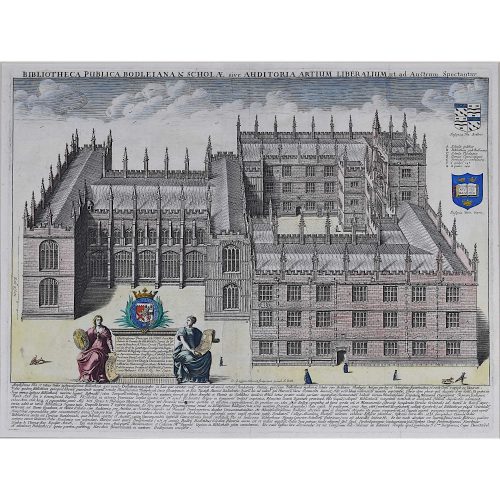
David Loggan (1634-1692) Bodleian Library Oxford - aerial view
Engraving (1675) with later hand colouring 30x40cm If you are interested email info@manningfineart.co.uk or call us on 07929 749056. -
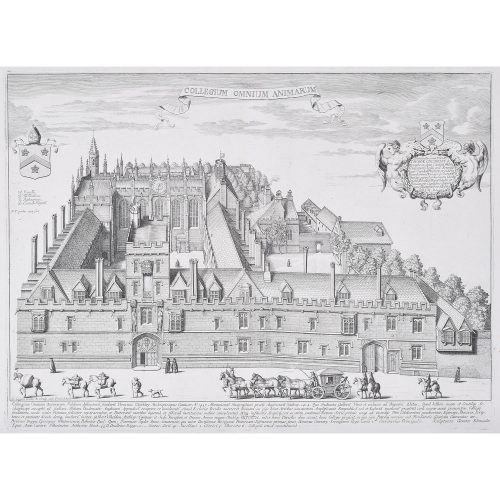
David Loggan (1634-1692) All Souls College, Oxford
Collegium Omnium Animarum Engraving (1675) 30x40cm If you are interested email info@manningfineart.co.uk or call us on 07929 749056. -
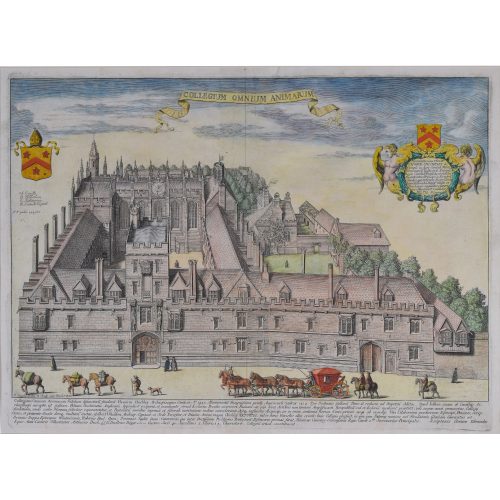
David Loggan (1634-1692)
All Souls College, Oxford
Engraving (1675) with later hand colouring 30x40cm If you are interested email info@manningfineart.co.uk or call us on 07929 749056. -
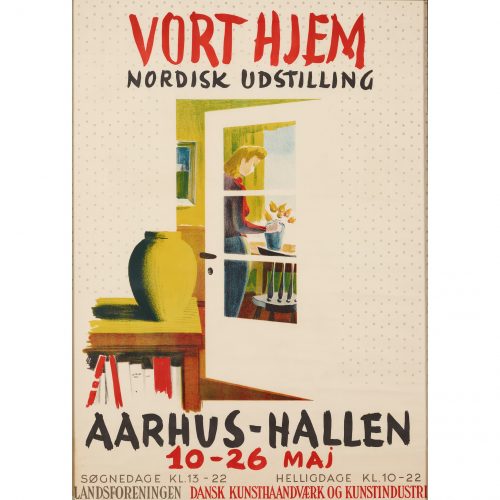
Danish Society of Arts and Crafts
'Vort Hjem', "Our Home" poster (c. 1950)
Lithographic poster 80.5 x 57 cm A poster advertising the 'Vort Hjem Nordisk Udstilling' - the "Our Home: Nordic Exhibition". The exhibition explored Nordic interior design and was commissioned by the Danish Society of Arts and Crafts. The poster presents a domestic scene of a woman arranging flowers; we see her through the glass panels of an ajar door, which invites us into the typically Danish interior. If you'd like to know more, please email info@manningfineart.co.uk or call us on 07929 749056. Condition: Excellent. -
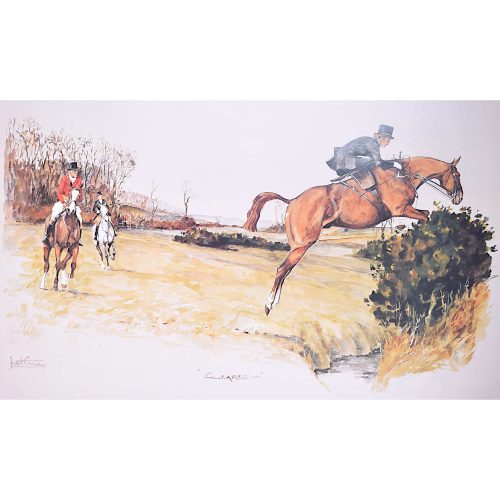
Daniel Crane (b. 1969) 'Cleared'
Limited edition print Signed in pencil and numbered 168/250 40x60cm One of the UK's leading sporting artists, Crane was born in Norfolk and is the youngest son of a hunting family. He grew up with a love of animals, the countryside and fieldsports, acquiring a particular passion for fox hunting in his late teens. He has been whipper-in, Master and Field Master and therefore understands the whole hunting process, allowing his paintings to reflect his knowledge and love of the sport. He is artist in residence for the Household Cavalry, and has many prestigious commissions to his name including Frankel - the greatest racehorse of all time - and Valegro the World and Olympic Champion. In this print, Crane captures the thrill and exhilaration that comes from clearing a hedge in fine style. If you are interested email info@manningfineart.co.uk or call us on 07929 749056. Condition: Never previously framed and in excellent condition. -
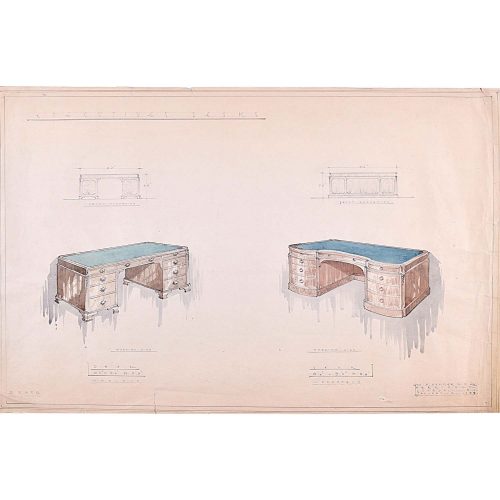
D.L Hadden
Design for Executive Desks Geo.M.Hammer
Watercolour and pencil 41x51cm Signed and dated 1959 Two beautifully detailed executive desks designs with sketches front elevations. Hadden's flair with woodwork design is evident in this masterful drawing. For biographical details and other works by the artist click here. If you are interested email info@manningfineart.co.uk or call us on 07929 749056. Condition: Generally good, some soft creases round the margins. -
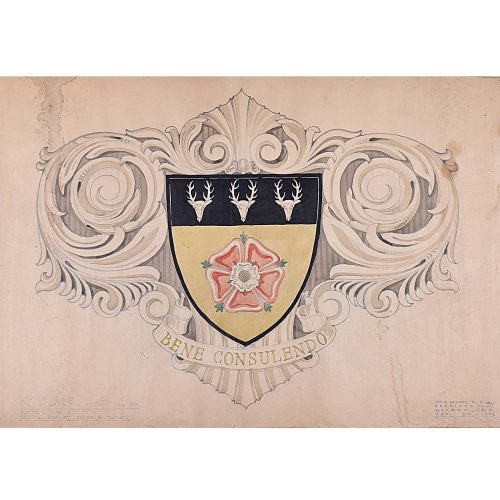
D.L Hadden
Design for Coat of Arms for Council Chambers
Watercolour and pencil 52x74.5cm Signed and dated 1959 A traditional coat of arms design for the city council chambers with directions by the artist that it is to be carved in lime and coloured as depicted. One of the many works Hadden produced during his time as senior designer at Geo M Hammer. For biographical details and other works by the artist click here. If you are interested email info@manningfineart.co.uk or call us on 07929 749056. Condition: Generally good, some water staining as visible in image. -
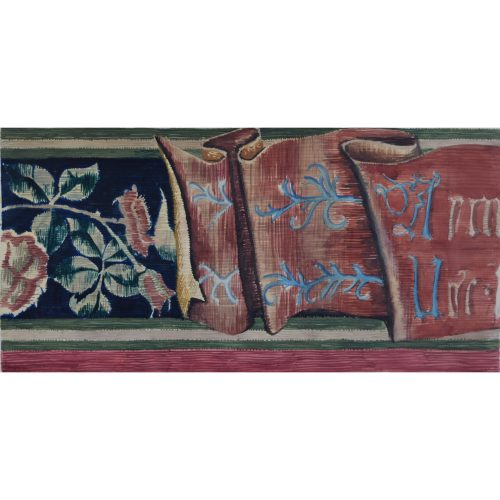
D. L. Hadden
Design for tapestry
Watercolour 25x50cm If you are interested email info@manningfineart.co.uk or call us on 07929 749056. -
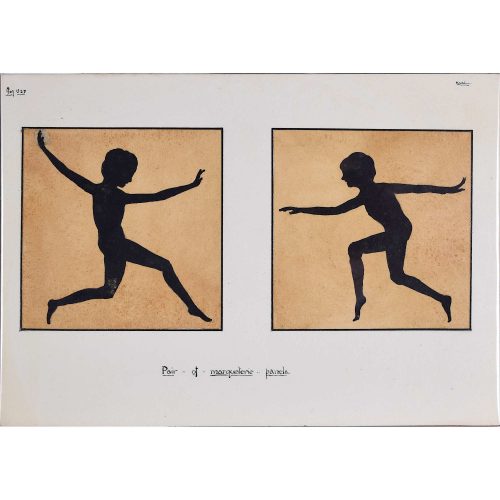
D L Hadden
Design for a Pair of Marquetrie Panels for Geo. M Hammer with two dancing figures
Watercolour and pen and ink 23x31.5cm For biographical details and other works by the artist click here. If you are interested email info@manningfineart.co.uk or call us on 07929 749056. -
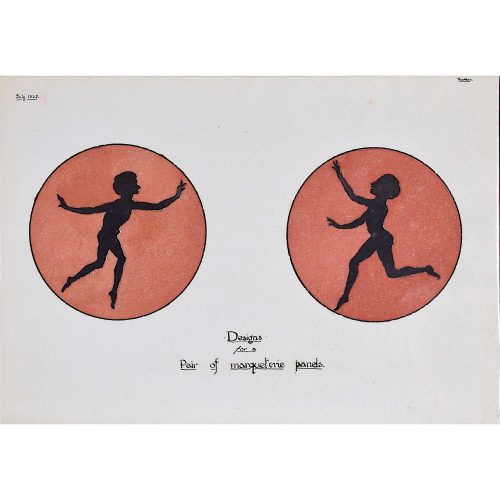
D L Hadden
Design for a Pair of Marquetrie Panels for Geo. M Hammer with two dancing figures
Watercolour and pen and ink 23x31.5cm For biographical details and other works by the artist click here. If you are interested email info@manningfineart.co.uk or call us on 07929 749056. -
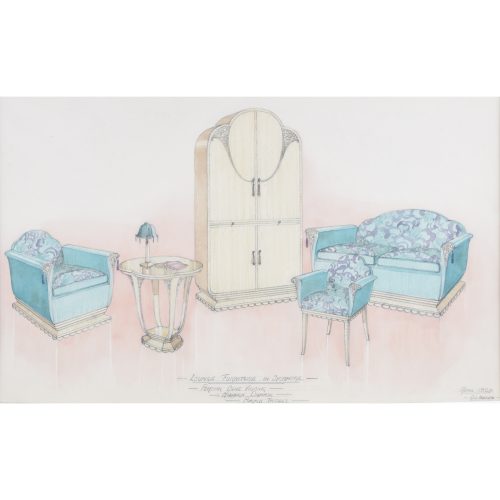
D L Hadden
Design for Lounge Furniture in Sycamore (1929)
Pencil and watercolour 29x49cm For biographical details and other works by the artist click here. If you are interested email info@manningfineart.co.uk or call us on 07929 749056. -

D L Hadden
Design for Hepplewhite Mahogany Settee
Watercolour and pencil 18x26cm For biographical details and other works by the artist click here. If you are interested email info@manningfineart.co.uk or call us on 07929 749056. -
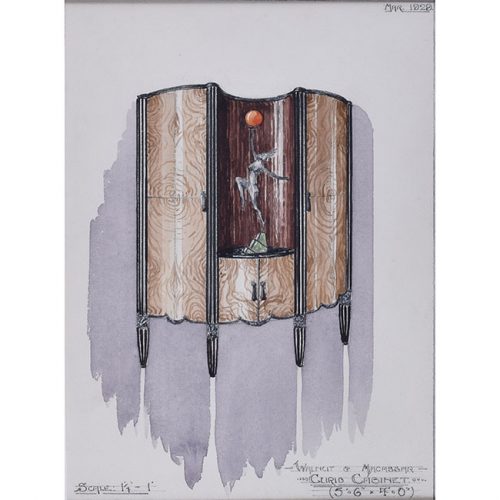
D L Hadden
Curio Cabinet Design (1929)
Pencil and watercolour 29.5x21.5cm For biographical details and other works by the artist click here. If you are interested email info@manningfineart.co.uk or call us on 07929 749056. -
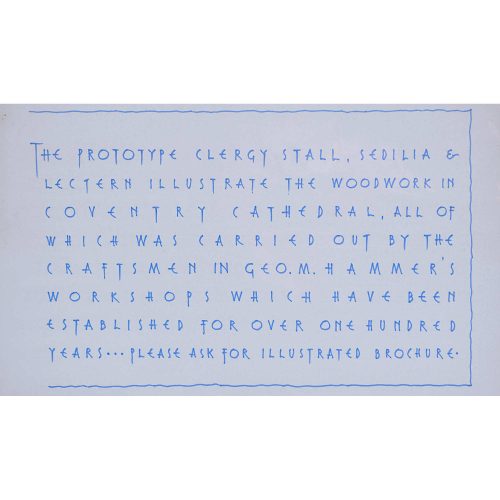
D L Hadden
Calligraphy for George M Hammer Coventry Cathedral Fittings
Pen and ink 20x35cm c. 1950 Hadden was a senior designer for Geo M Hammer, designers and retailers of school and ecclesiastical furniture. Their lift-top school desks are particularly well regarded, and always carried their brass name plate. Hammer were renowned for their interior woodwork, they were commissioned to undertake the choir stalls in Sir Basil Spence’s ground-breaking Coventry Cathedral. Dick Russell (brother of Gordon Russell and who worked for his brother before World War Two) famously designed the chairs to be used by the congregation; as all-wood stacking chairs they were innovative at the time. As senior designer, Hadden was at the heart of the Coventry project. Coventry's great place in the world of calligraphy comes from the Ralph Beyer typeface (or font) which surely has had an influence on Hadden's calligraphy here - see our matching card that refers to London Churches. For biographical details and other works by the artist click here. If you are interested email info@manningfineart.co.uk or call us on 07929 749056. -
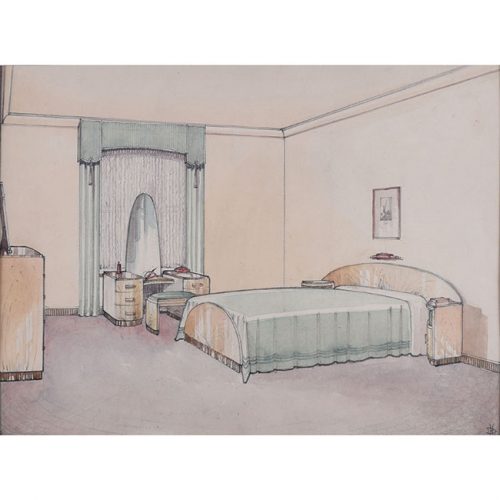
D L Hadden
Bedroom Interior
Pencil and watercolour 23x31.5cm For biographical details and other works by the artist click here. If you are interested email info@manningfineart.co.uk or call us on 07929 749056. -
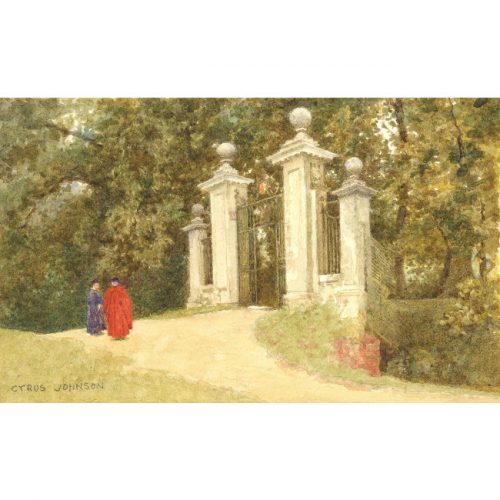
Cyrus Johnson (1848-1925)
Two Dons Engaged in Conversation by Clare College Back Gates, Cambridge
Watercolour 13x22cm If you are interested email info@manningfineart.co.uk or call us on 07929 749056. -
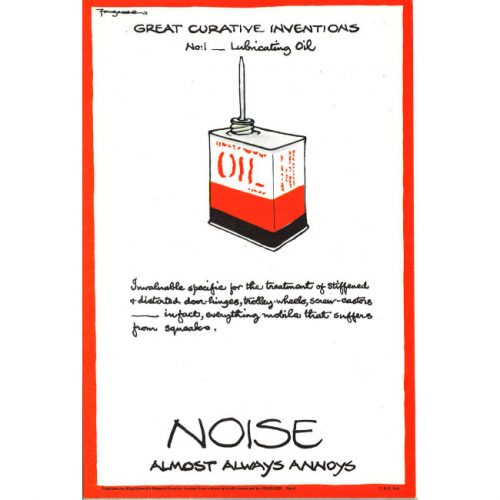
Cyril Kenneth Bird ‘Fougasse’ (British 1887-1965)
Noise Almost Always Annoys
Lithographic poster c1940 29.5 x 19.6 cm (11.5 x 7.5 in) printed by Fosh & Cross Ltd. “Published by King Edward’s Hospital Fund for London from a drawing kindly presented by Fougasse. No. 6. F&C Ltd.” Further biographical details and items by Fougasse are available here. If you are interested email info@manningfineart.co.uk or call us on 07929 749056. -
Out of stock
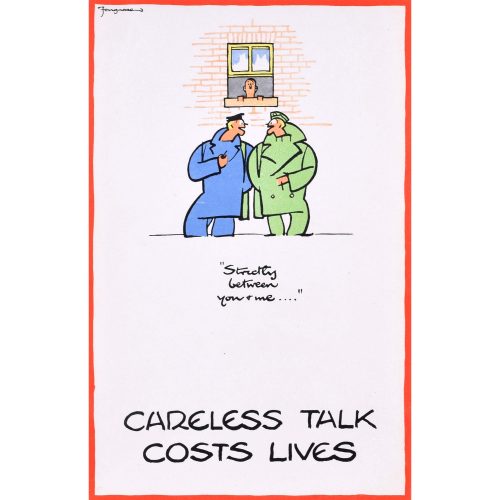
Cyril Kenneth Bird ‘Fougasse’ (British, 1887-1965) Careless Talk Costs Lives
Lithographic poster c.1940 32 x 20 cm (12.5 x 8 in) The cartoonist Fougasse, was a British cartoonist who was art editor of Punch 1937-1949, and subsequently editor until 1953. He is best known for his ‘Careless Talk Costs Lives’ series of posters, and the other posters both for the Ministry of Information, London Underground and others. The Ministry of Information’s wartime poster campaign was soon regarded as dull and uninspiring on account of its hectoring messages such as ‘Keep Calm and Carry On.’ There were posters telling the population how to conduct virtually every minute of their daily lives – for instance by saving old clothes for rags, turning off the lights, saving food, digging for victory, or watching out for spies. With this instruction overload the population ceased paying attention to the posters, so Fougasse offered his services to the Ministry of Information unpaid, with a view to bringing a touch of humour to serious messages. An amusing picture and a pithy caption helped to get the message across to the reader. His distinctive style, with the red border, was adopted by other Ministry artists. If you are interested email info@manningfineart.co.uk or call us on 07929 749056. Condition: Excellent. -
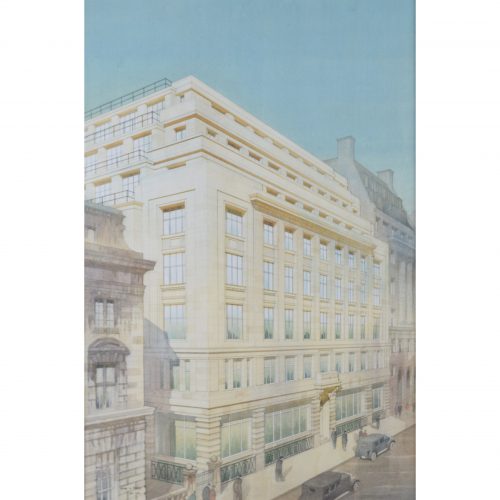
Cyril A. Farey
Design for an Art Deco office building, (1932)
Signed ‘Cyril A Farey Del 1932’ Pencil and watercolour 23 x 16 in A glorious and large drawing of an as-yet unidentified art deco building. This picture is classic Farey, with the reflections in the foreground and the bright blue sky. Biographical details and other works by Cyril Farey can be found here. If you are interested email info@manningfineart.co.uk or call us on 07929 749056. -
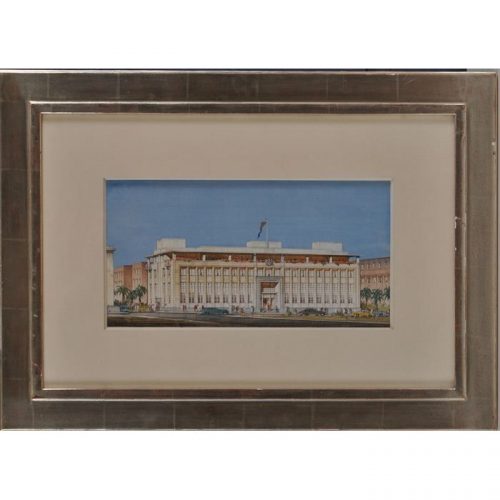
Cyril A. Farey (1888-1954)
National Bank of India, Aden
Watercolour 44x60cm (frame) 17.5×33.5cm (6.8×13.1 inches) Biographical details and other works by Cyril Farey can be found here. In 1839 Aden was taken by the East India Company as a recoaling point between India and the UK. Aden came under the control of the Government of Bombay. In 1937, recognising the geographical distinction between India and Aden it ceased to be a part of British India and became a Crown Colony with its own Governor. If you are interested email info@manningfineart.co.uk or call us on 07929 749056.

